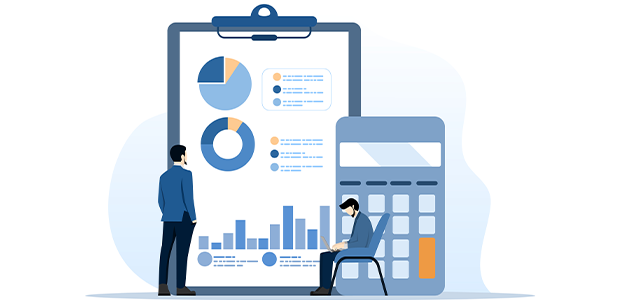
Digital accounting: Mastering the transition for your startup in five simple steps
Gone are the days of manual data entry and cumbersome spreadsheets! Digital accounting is sharply becoming an essential tool for modern-day startups seeking to streamline their operations and improve financial management. It offers a more efficient and accurate approach, leveraging technology to automate tasks, centralise information, and enhance decision-making.
By transitioning to digital accounting, startups can benefit from increased efficiency, reduced errors, improved data security, and enhanced collaboration. This article will explore the key advantages of digital accounting and provide practical guidance on how to successfully implement this transformative technology into your growing business.
The power of digital accounting
As mentioned, digital accounting offers numerous benefits for businesses. By automating tasks, reducing manual data entry, and leveraging cloud-based technology, businesses can streamline their financial operations, mitigate risks and make more informed decisions. Additionally, with all eyes on business to positively contribute towards the environment, digital accounting can help businesses reduce their environmental impact by reducing paper-based processes.
Document management systems (DMS) play a crucial role in enabling digital accounting by providing a centralised platform for organising, storing and retrieving financial documents. By integrating DMS with ERP or accounting software, startup businesses can streamline workflows, automate data entry and ensure compliance with regulations. DMS also offers features like version control and enhanced security measures to protect sensitive financial information.
Implementing your digital accounting solution
Now that you understand the benefits of digital accounting and the role of document management, it's time to implement your solution. Let me guide you through the five key steps to ensure a successful transition.
1. Assess current processes, identify business needs and get employees onboard
Start by assessing your current accounting processes. Identify areas where digitisation can significantly improve efficiency and address pain points. This understanding will help you prioritise your digital transformation efforts. Involve your team in the design process too. Those who use the system daily often have valuable insights that can help you create a solution that truly meets your needs.
2. Choose the right digital accounting software or platform
Once you've identified your specific needs, choose digital accounting software that aligns with them. The solution should be user-friendly and offer essential features: a process-mapping tool to visualise and optimise workflows, integration with web forms to streamline data entry and reduce paperwork, remote and mobile access for collaboration and work from anywhere, and electronic signatures to securely authenticate documents and speed up processes.
3. Migrate documents and test workflows
Migrating your existing accounting data and documents to the new system is crucial. Many companies – of all sizes – use a 'day-forward' approach, continuing to work with older documents in the old system until a specified cutoff date. Newer documents are then stored and processed in the document management system. Inactive documents can be migrated for archival purposes. Some companies maintain both systems initially to allow for a smooth transition. Others may choose to completely switch to the new system at once.
Depending on your setup, the deployment of your office automation solution may involve creating a test system or phasing in the implementation. Thorough testing is essential to avoid unexpected issues that could disrupt your startup business. Address any problems promptly and demonstrate progress in regular meetings. This is also the time to train your IT team and key users. After deployment, it’s vital to conduct a training exercise using sample documents to familiarise your team with the new system.
4. Train staff and stakeholders on the new system
As mentioned, you must provide comprehensive training sessions to ensure employees understand how to use the software effectively and recognise its benefits. This training time will very much vary depending on the user's role and responsibilities. System administrators and power users may require more extensive training, while end users focused on specific workflows may need shorter sessions. A top tip from me is to create ongoing technical documentation to support your team and ensure knowledge retention.
5. Regularly update the digital system for optimisation document the changes
Regularly update and audit your digital system to ensure compliance with evolving regulations and maintain its effectiveness. Audits help identify and address potential compliance issues proactively. Optimisations can enhance the system's efficiency and user experience as they identify and address inefficiencies, so you can improve the overall performance of your digital accounting solution.
Next, create and maintain technical documentation to support your team and ensure a smooth transition. The documentation should clearly identify system administrators as a point of contact for questions. Remember that your digital accounting system should adapt to your startup business's changing needs. It's not a one-time setup - ongoing maintenance and updates are essential.
Embracing the future of financial management
By implementing these five steps, startups can successfully transition from traditional accounting methods to digital ones. This shift will not only streamline your financial operations but also improve overall efficiency, accuracy and security. As the business landscape continues to evolve, digital accounting will become increasingly essential for staying competitive and making informed decisions as your startup business continues to grow.

